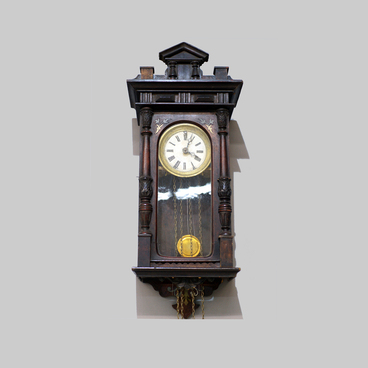Most of the necessary household items and tools were made by family members at home. They used the materials commonly found in nature that surrounded them. For the most part it was wood, tree bark, willow twigs, and split roots of spruce trees. Each peasant family spun, weaved, sewed, and made furniture and tableware. Many domestic crafts common among the Udmurts had ancient traditions.
The Udmurts have long used flax and hemp to manufacture fabrics. Sheepskin was used to make winter clothing; leather was used to make shoes, bags, and belts; wool was spun for knitting warm clothes and making fabrics; bone and horns were used for crafts.
Most types of domestic crafting activities were carried out by men: they weaved bast shoes, fabric sacks, and mats; made leather; crafted simple furniture and agricultural implements, such as harrows, pitchforks, axe handles, etc. They also manufactured means of transportation, such as sleighs, skiis, and boats; various storage items and vessels, such as tubs, barrels, cups, and baskets. Their manufacturing techniques were simple: masters used the basic instruments at their disposal, such as knives, chisels, scrapers, and needles.
Women were manufacturing clothes almost all year round, including the processing of hemp and flax, and production of fiber and yarn. The yarn was spun on a spinning wheel; later on, on a self-spinning wheel. The threads were spun roughly until Christmas, then they were washed and dyed; there was even a ‘short misk’on’ ritual - the washing of yarn skeins. When the ritual was complete the fabrics were manufactured from the threads. Working the loom was easy to learn but hard and time-consuming to master.
Bast shoes were made in every peasant family — these were the shoes that everyone wore. Every man who could craft neat and sturdy bast shoes was revered for his craftsmanship. Few could master the craft of weaving — it demanded inspiration and persistence. Instruments for bast shoe weaving — kochedik and the block.
In the Kama region, bast — the inner part of the linden bark — was first used for weaving shoes. In the early 20th century, Vyatka governorate was the leading manufacturer of bast shoes, bast, matting, and fabric sacks in the European part of Russia.
Up to 13 variants of bast shoes were manufactured in the region at the time. There were several distinct types of bast shoes that were manufactured in different ways: Russian, Udmurt, Tatar, Mari, and Chuvash. Bast shoes were “hot” on the bazaars, marketplaces, and fairs — they always sold out. When heading out into a long journey on foot, the traveller would put some straw into their bast shoes for a more comfortable walking experience. During the mud season in autumn and spring, boards were sewn to the soles of bast shoes to keep people’s feet from getting wet and enhance the durability of the bast shoes.
The Udmurts have long used flax and hemp to manufacture fabrics. Sheepskin was used to make winter clothing; leather was used to make shoes, bags, and belts; wool was spun for knitting warm clothes and making fabrics; bone and horns were used for crafts.
Most types of domestic crafting activities were carried out by men: they weaved bast shoes, fabric sacks, and mats; made leather; crafted simple furniture and agricultural implements, such as harrows, pitchforks, axe handles, etc. They also manufactured means of transportation, such as sleighs, skiis, and boats; various storage items and vessels, such as tubs, barrels, cups, and baskets. Their manufacturing techniques were simple: masters used the basic instruments at their disposal, such as knives, chisels, scrapers, and needles.
Women were manufacturing clothes almost all year round, including the processing of hemp and flax, and production of fiber and yarn. The yarn was spun on a spinning wheel; later on, on a self-spinning wheel. The threads were spun roughly until Christmas, then they were washed and dyed; there was even a ‘short misk’on’ ritual - the washing of yarn skeins. When the ritual was complete the fabrics were manufactured from the threads. Working the loom was easy to learn but hard and time-consuming to master.
Bast shoes were made in every peasant family — these were the shoes that everyone wore. Every man who could craft neat and sturdy bast shoes was revered for his craftsmanship. Few could master the craft of weaving — it demanded inspiration and persistence. Instruments for bast shoe weaving — kochedik and the block.
In the Kama region, bast — the inner part of the linden bark — was first used for weaving shoes. In the early 20th century, Vyatka governorate was the leading manufacturer of bast shoes, bast, matting, and fabric sacks in the European part of Russia.
Up to 13 variants of bast shoes were manufactured in the region at the time. There were several distinct types of bast shoes that were manufactured in different ways: Russian, Udmurt, Tatar, Mari, and Chuvash. Bast shoes were “hot” on the bazaars, marketplaces, and fairs — they always sold out. When heading out into a long journey on foot, the traveller would put some straw into their bast shoes for a more comfortable walking experience. During the mud season in autumn and spring, boards were sewn to the soles of bast shoes to keep people’s feet from getting wet and enhance the durability of the bast shoes.



